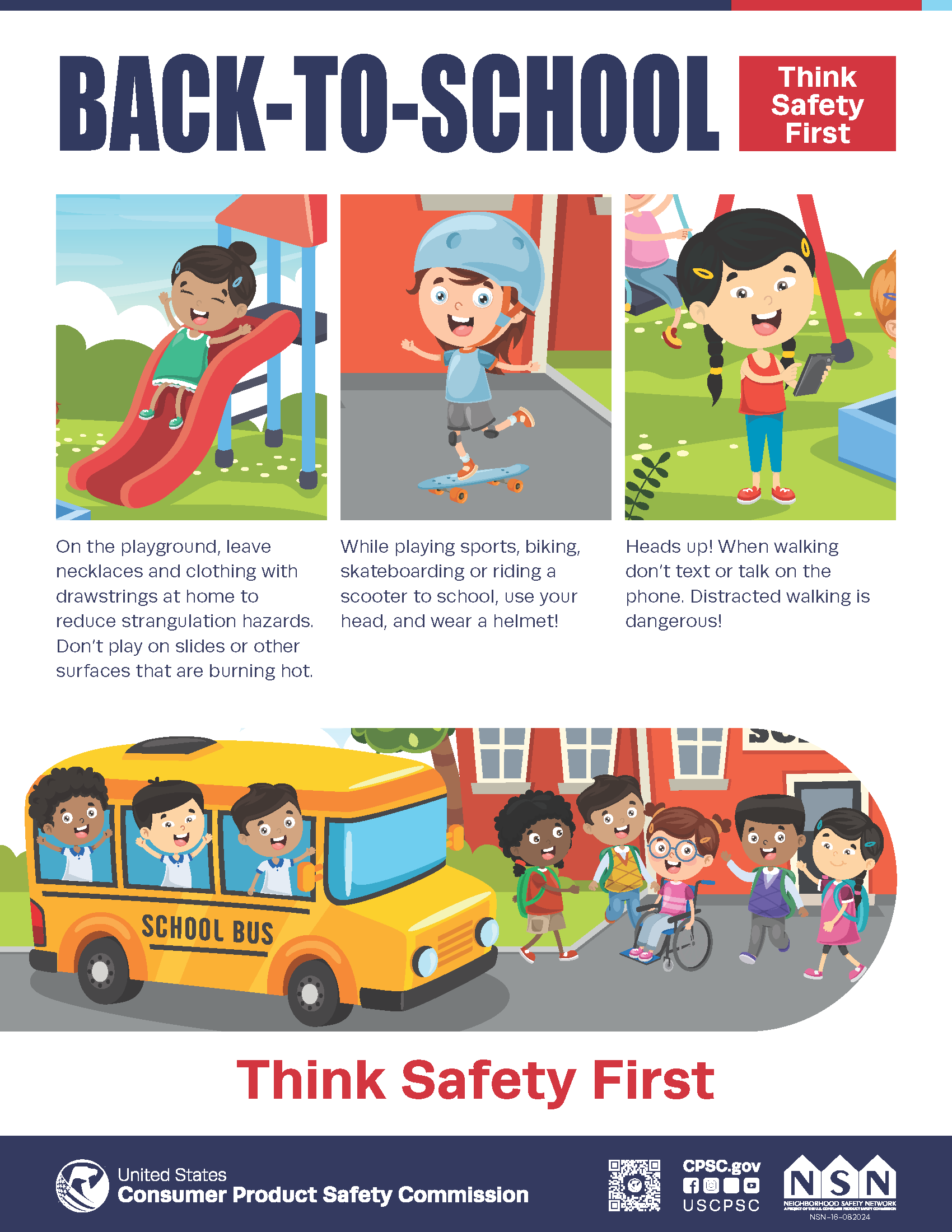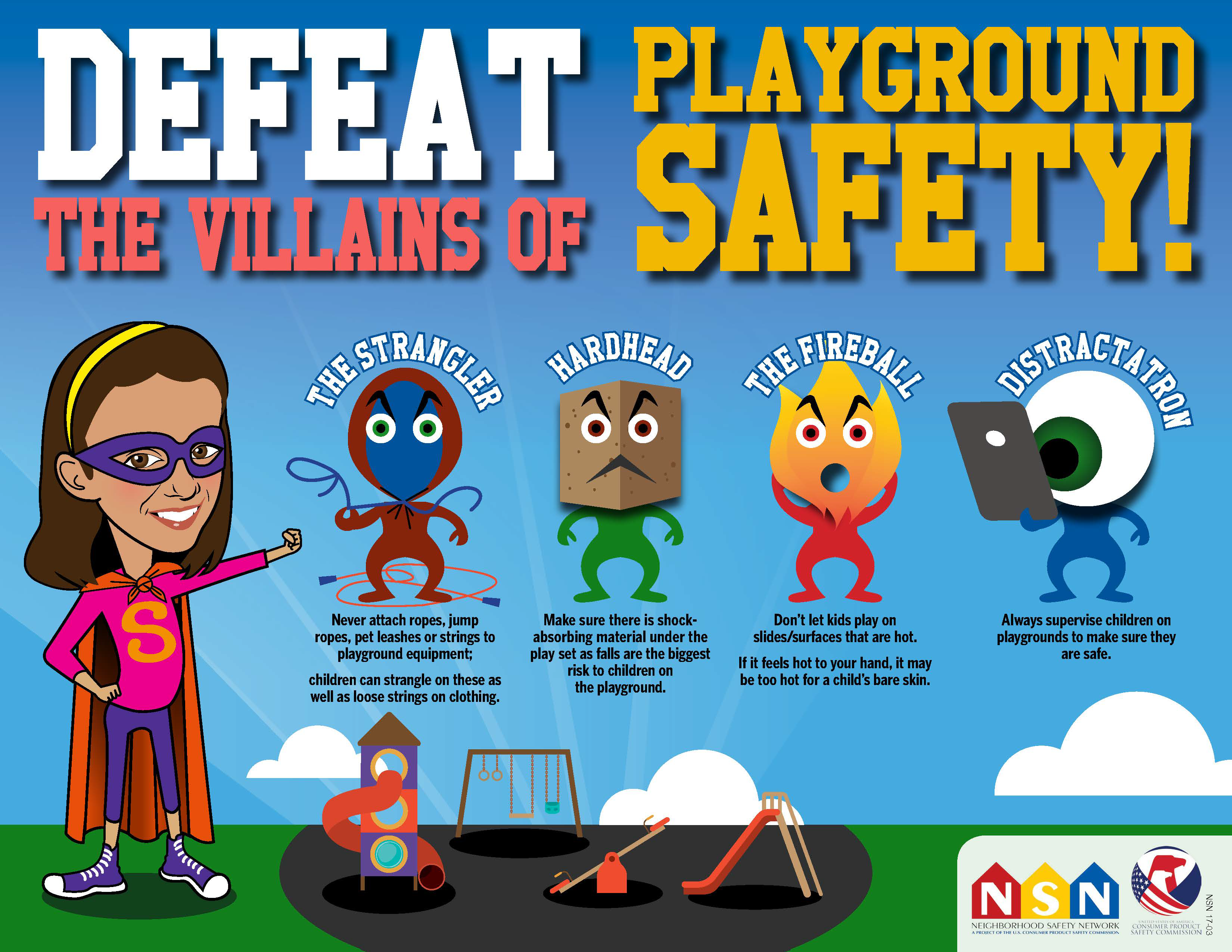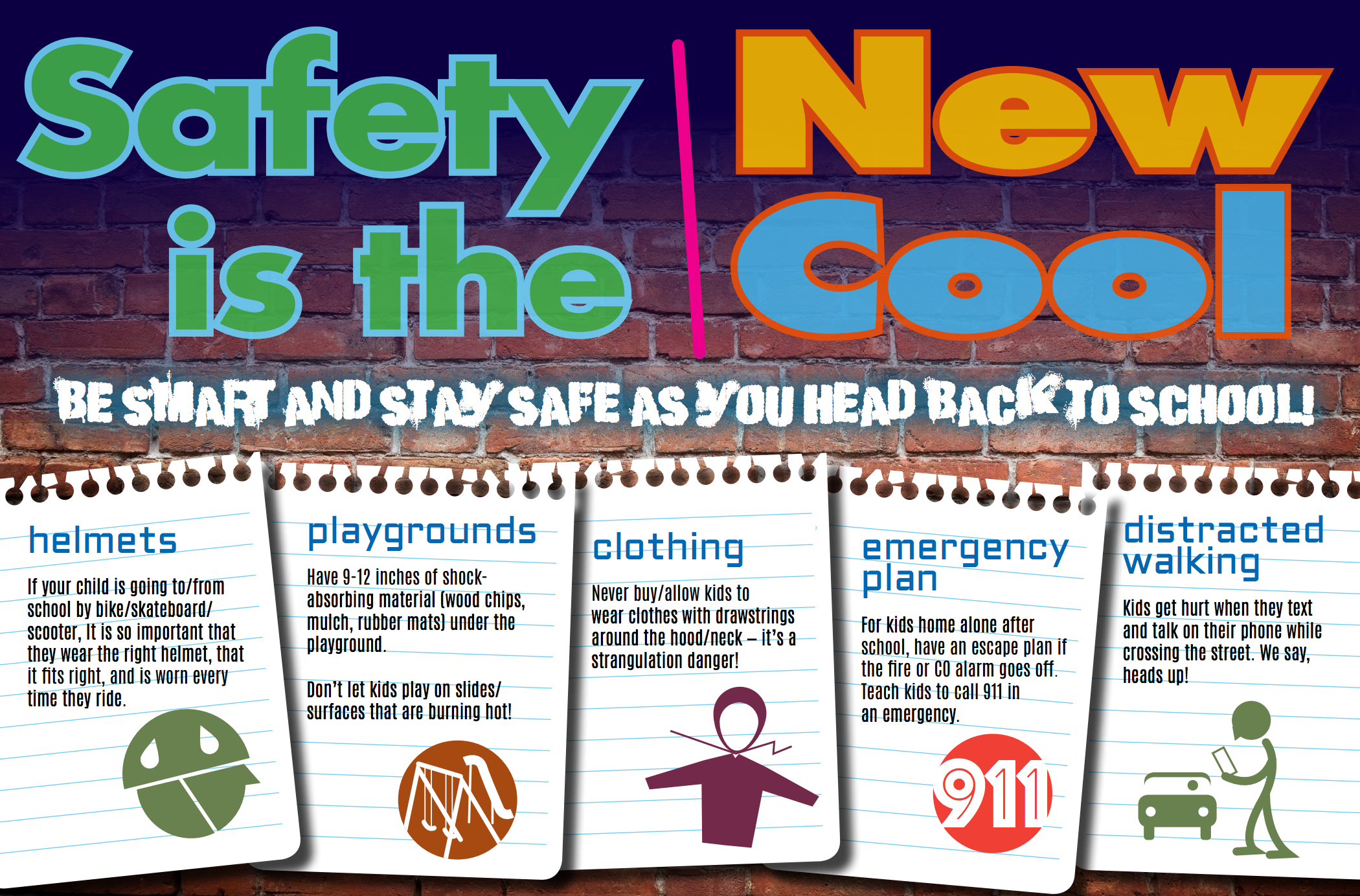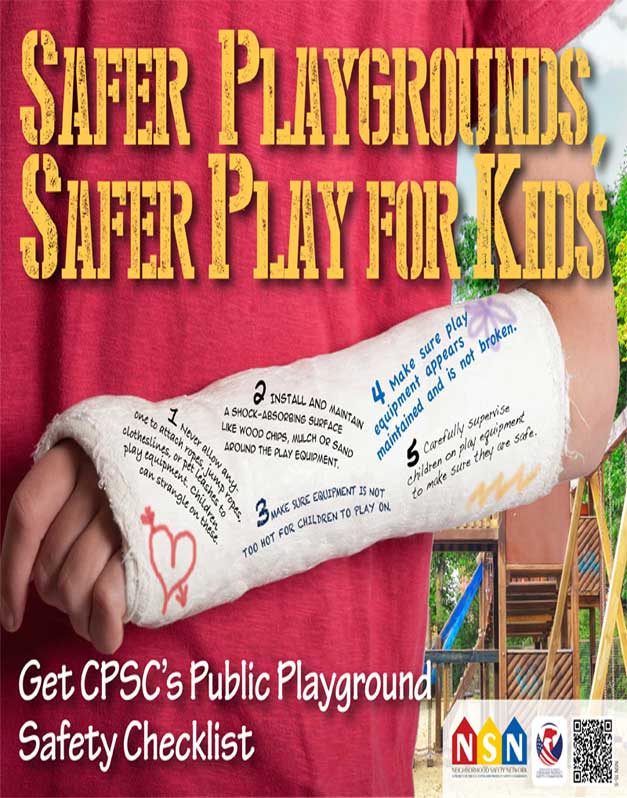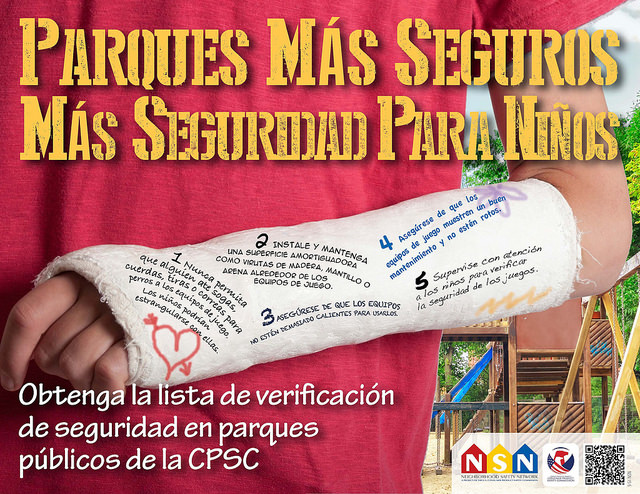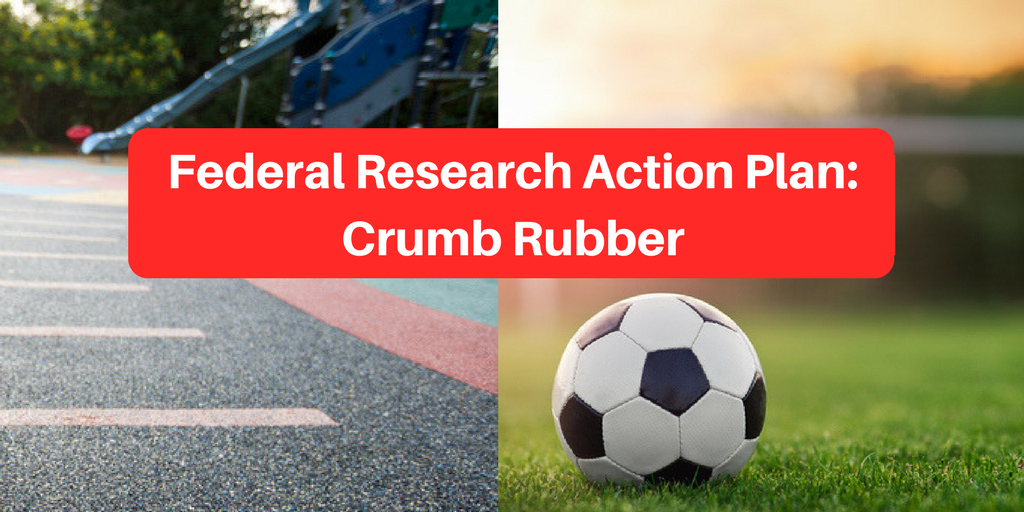
Status of CPSC’s Review of Playgrounds with Crumb Rubber
Federal Research Action Plan
The public, media, and government agencies have expressed concern that the chemicals in surfaces derived from recycled tires may be hazardous to human health. In February 2016, the Federal Research Action Plan on Recycled Tire Crumb Used on Playing Fields and Playgrounds (FRAP) was announced.
This is a multi-agency effort that includes the U.S. Environmental Protection Agency (EPA), Centers for Disease Control and Prevention (CDC), and the U.S. Consumer Product Safety Commission (CPSC) performing research that seeks to improve the understanding of potential health effects of recreational exposures to recycled tire crumb rubber. The EPA and CDC studied the chemical characteristics of recycled tire materials and the exposures on playing fields. The CPSC is assessing the risk to consumers associated with the use of recycled tire materials in playground surfaces, which will leverage the information provided by EPA and CDC.
As part of the FRAP, CPSC conducted focus groups and a playground use survey gathering information about children’s behavior on playgrounds. This survey was completed on September 5, 2019. A report of the survey findings is available (pdf). Concurrently, the EPA and CDC’s Agency for Toxic Substances and Disease Registery (ATSDR) collected data and developed the FRAP Part 1 Report (characterization of the chemicals and materials in tire rubber crumb), released July 25, 2019 and the FRAP Part 2 Report (characterization of potential exposures for those who use turf fields containing tire crumb) released April 16, 2024. These reports by EPA, CDC-ATSDR, and CPSC to date fulfil the directives described in the FRAP.
CPSC is evaluating the newly released FRAP 2 Report from EPA to consider its relevance to a risk assessment of children’s exposure to playground surfaces made of tire rubber. Within available resources, CPSC staff will review the available data in detail and consider any remaining data needs to evaluate the hazards of recycled tire rubber in playground surfacing.This work will include the CPSC survey as well as data from EPA/CDC-ATSDR’s FRAP Reports. Staff’s initial review of the FRAP Reports indicates that exposures to selected materials from recycled tire crumb on sports fields appear to be limited for both inhalation and dermal pathways. CPSC staff recognizes that the scenarios of athletes on a synthetic turf field may not perfectly represent young children on a playground, but the athletes’ exposure data may be useful in exposure modeling for playground users. Any additional work on recycled tire rubber in playground surfacing will depend on availability of resources and agency priorities.
Reports
EPA/CDC-ATSDR’s Synthetic Turf Field Recycled Tire Crumb Rubber Characterization Research Final Report: Part 1 -Tire Crumb Rubber Characterization and Synthetic Turf Field Recycled Tire Crumb Rubber Exposure Characterization and Synthetic Turf Field Recycled Tire Crumb Rubber Characterization Research Final Report: Part 2 - Exposure Characterization are available at www.epa.gov/tirecrumb.
Summary of Playground Surfacing Focus Groups 2018 (pdf)
Advice for Communities Concerned about Playgrounds with Recycled Tire Surfaces
We recognize that communities, parents and state and local officials are concerned about recycled tire materials used in playground surfacing.
The Child Interaction and Potential Exposure to Playground Surfacing Materials study findings (pdf) provide a better understanding of potential exposures children may experience by using playgrounds with recycled tire surfacing. While this short-term study won’t provide all the answers, the information will help answer some of the key questions that have been raised.
While no specific chemical hazards from recycled tires in playground surfacing are known by the CPSC at this time, the following precautions to limit exposure are recommended:
- Avoid mouth contact with playground surfacing materials, including mouthing, chewing, or swallowing playground rubber. This may pose a choking hazard, regardless of chemical exposure.
- Avoid eating food or drinking beverages while directly on playground surfaces, and wash hands before handling food.
- Limit the time at a playground on extremely hot days.
- Clean hands and other areas of exposed skin after visiting the playground, and consider changing clothes if evidence of tire materials (e.g., black marks or dust) is visible on fabrics.
- Clean any toys that were used on a playground after the visit.
Communities, parents, state and local officials are encouraged to explore Federal Agency websites to review the research results available to date on the use of recycled rubber tires for playgrounds and artificial turf fields. In addition, concerned individuals can check their state’s public health agency websites to determine if there are state-specific recommendations.



